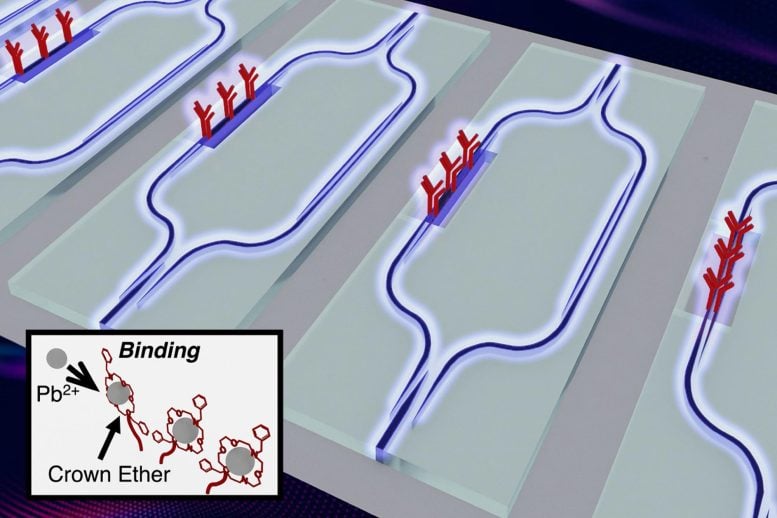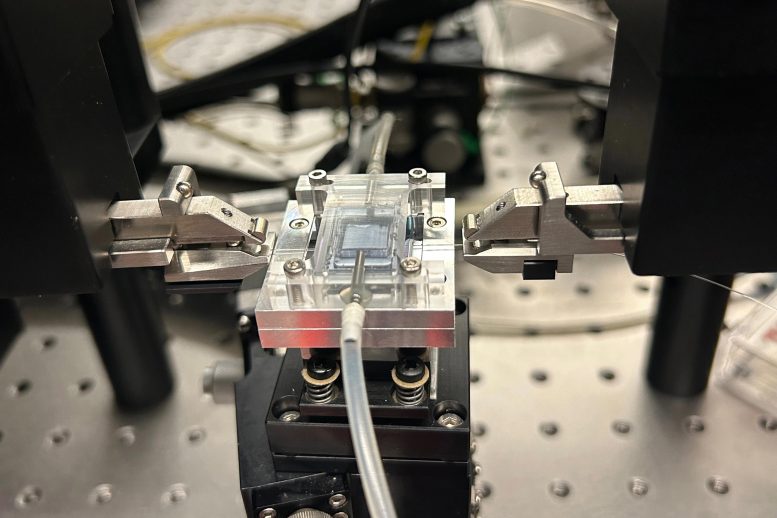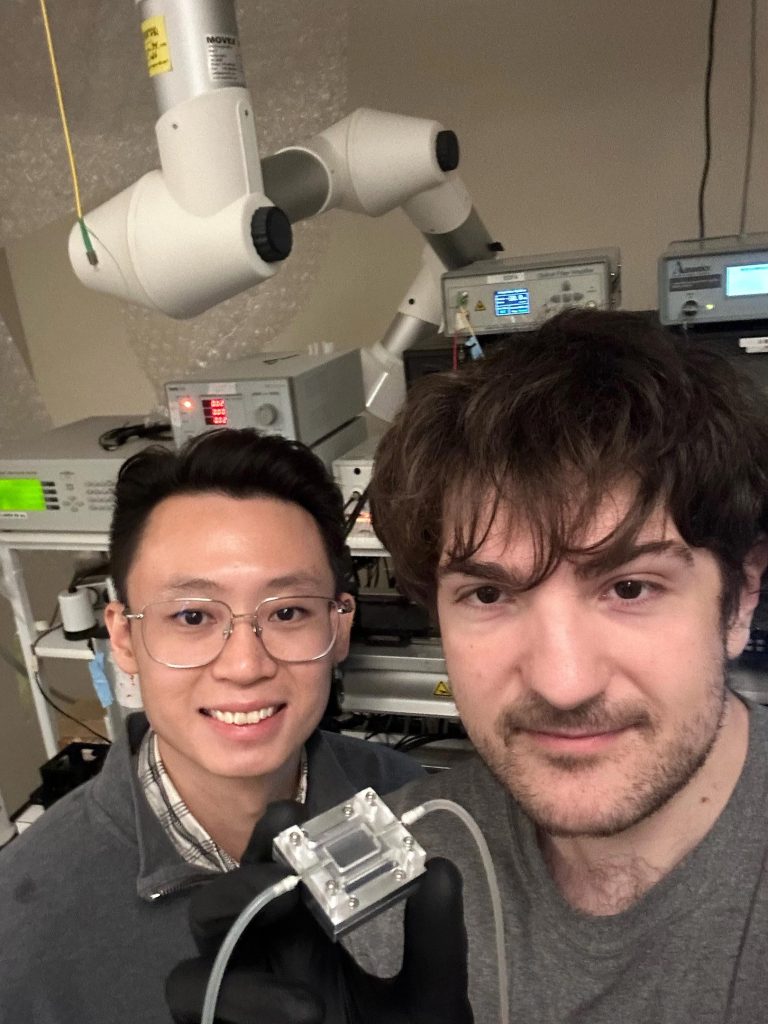
Artist’s impression of the chip surface, showing the on-chip light interferometer used to sense the presence of lead. The lead binding process to the crown ether is shown in the inset. Credit: Jia Xu Brian Sia
A new chip-scale device could provide sensitive detection of lead levels in drinking water, whose toxicity affects 240 million people worldwide.
Engineers at
The World Health Organization estimates that 240 million people worldwide are exposed to drinking water that contains unsafe amounts of toxic lead, which can affect brain development in children, cause birth defects, and produce a variety of neurological, cardiac, and other damaging effects. In the United States alone, an estimated 10 million households still get drinking water delivered through lead pipes.

Testing setup of the photonic chip sensor, including microfluidic chamber to transport analyte solutions and optical fibers on the sides to measure the photonic response of the chip. Credit: Courtesy of the researchers
“It’s an unaddressed public health crisis that leads to over 1 million deaths annually,” says Jia Xu Brian Sia, an MIT postdoc and the senior author of the paper describing the new technology.
However, testing for lead in water requires expensive, cumbersome equipment and typically requires days to get results. Or, it uses simple test strips that simply reveal a yes-or-no answer about the presence of lead but no information about its concentration. Current EPA regulations require drinking water to contain no more than 15 parts per billion of lead, a concentration so low it is difficult to detect.
Innovative Photonic Chip Technology
The new system, which could be ready for commercial deployment within two or three years, could detect lead concentrations as low as 1 part per billion, with high 
Jia Xu Brian Sia (left) and Luigi Ranno (right) showcasing the fully packaged sensor chip and microfluidic chamber. Credit: Courtesy of the researchers